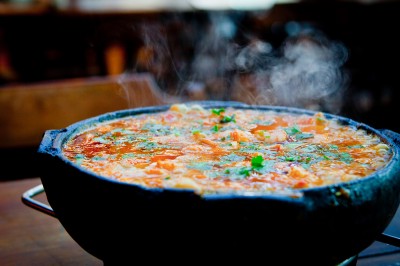Although it’s a folklore tradition in North America and Europe, it has little to do with our Brazilian traditions. Each year more and more people celebrate Halloween in Brazil due to foreign influences and the inevitable globalization. Our kids began to love wearing costumes and go trick-or-treating around their neighborhoods! They even end up learning a little bit of English, since most words and expressions for this holiday come from abroad.
This kind of cultural exchange is great but we end up not caring as much to our own folklore traditions. While kids are dressed like witches and vampires, they forget about the Brazilian myths, such as the Saci-Pererê: an annoying prankster boy with holes in his hand palms and a single leg, who has magical powers, smokes a pipe and wears a magical red cap that enables him to disappear whenever he wishes.
In some parts of the country the Brazilian folklore is much more celebrated. In the Amazon, for example, the myths surrounding the pink dolphins are remembered every day, since it´s part of the day to day life of many riverside communities. The myth says that at night pink dolphins become handsome young men who seduces girls, impregnates them, and then return to the river in the morning to become a dolphin again. Some also say that they are the guardians of the Amazonian Manatee. If you come to one of our amazon cruises you will sure see many of them.
We hope that Brazilian kids don´t forget these national myths while celebrating the Halloween, and who knows, your kids can also celebrate our myths some day!
If you wish to learn more about Brazilian folklore, please access the Brazilian Government´s official website .
Happy Halloween & Saci Pererê Day!



